Ford Mustang (1999-2004) Service Manual: Installation
1. Install the spring.
1. Position the spring and spring insulator in the front suspension lower control arm.
2. Swing the arm into the fender well.
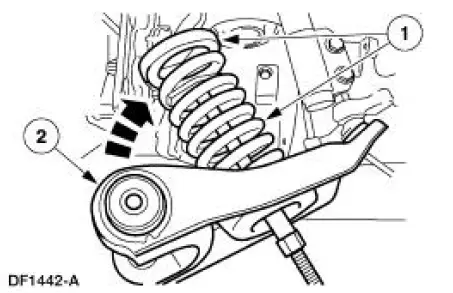
2. Position a jack stand under the front suspension lower control arm inboard of the spring seat and raise the arm into position.
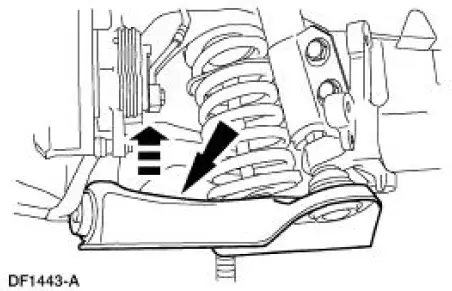
3. NOTE: The front suspension lower arm nuts must be tightened with the suspension at curb height.
Install the bolts and nuts. Do not tighten the bolts at this time.
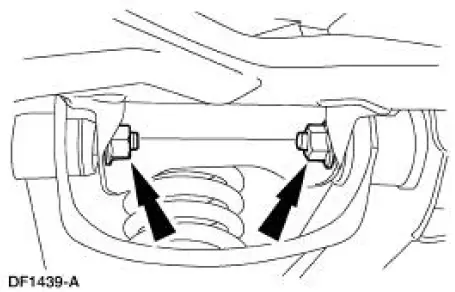
4. Make sure the spring is correctly positioned in the front suspension lower arm.
1. Spring must not cover this hole.
2. Spring must cover this hole.
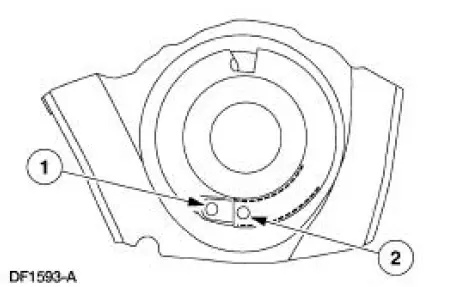
5. Remove the special tool.
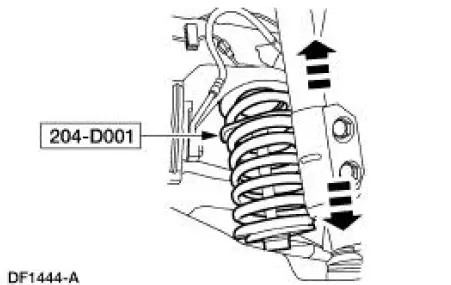
6. Move the jack stand under the front suspension lower arm ball joint and raise the suspension until the shock absorber is compressed to the previously established alignment mark (curb height).
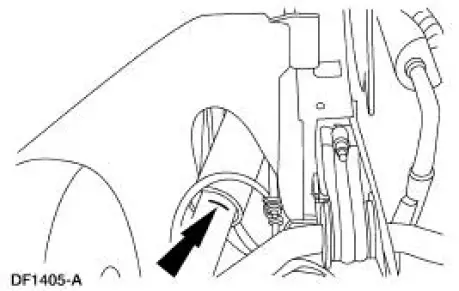
7. Tighten the nuts.
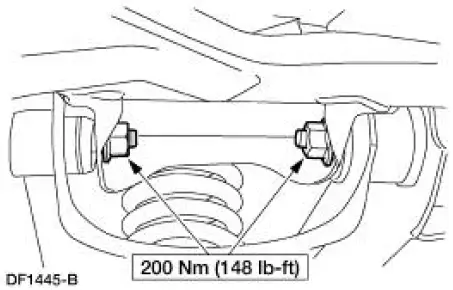
8. Remove the jack stand.
9. Install the power rack and pinion steering gear.
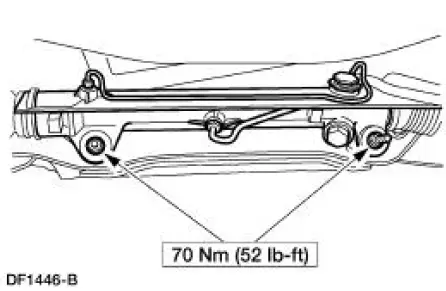
10. Position the intermediate shaft and install the bolt.
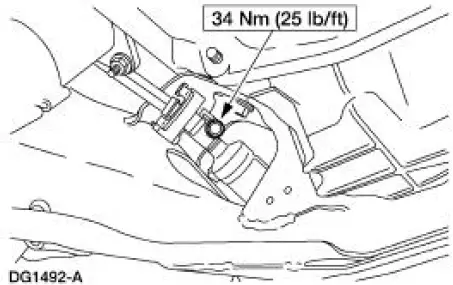
11. Connect the stabilizer bar link to the front suspension lower arm.
1. Install the link and bushing.
2. Install the nut.
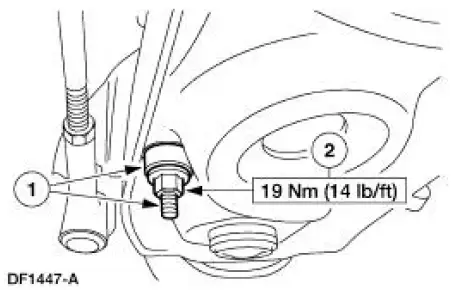
12. Connect the tie-rod end to the spindle.
1. Install the tie-rod end into the spindle.
2. Install the nut.
3. Install a new cotter pin.
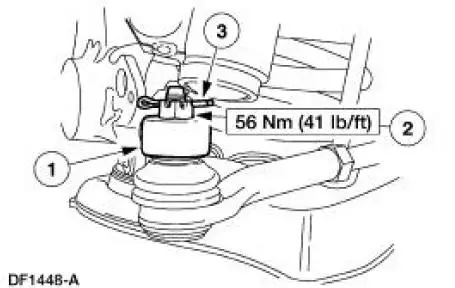
13. Install the wheel and tire assembly. 14. Lower the vehicle.
15. Check wheel alignment. Adjust if necessary.
 Removal
Removal
CAUTION: Suspension fasteners are critical parts because they affect
performance of vital
components and systems and their failure can result in major service expense. A
new part with
the same part ...
 Rear Suspension
Rear Suspension
Torque Specifications
WARNING: All vehicles are equipped with gas pressurized shock absorbers
which will
extend unassisted. Do not apply heat or flame to the shock absorbers during
removal or
comp ...
Other materials:
Torque Converter Leak Check
Special Tool(s)
Leak Tester, Torque Converter
307-421
1. Clean the outside surface of the torque converter.
2. Install the special tool into the converter hub.
3. WARNING: Always follow correct safety procedures while using press.
Failure t ...
Idle Air Control (IAC) Valve - Cobra
Removal and Installation
1. Disconnect the idle air control (IAC) valve electrical connector.
2. Remove the bolts, the IAC valve and the gasket.
3. NOTE: Install a new gasket if necessary.
To install, reverse the removal procedure. ...
Pinpoint Tests
CAUTION: Before removing and installing the generic electronic
module (GEM) or its
connectors, disconnect the battery. Failure to follow this caution will
result in the GEM storing
many erroneous DTCs, and it may exhibit erratic operation after
in ...
